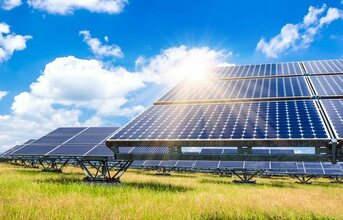
Aligned with India's vision of becoming ‘Atmanirbhar' and to catalyse India's manufacturing capabilities, as part of the PLI scheme, the government has committed Rs 4,500 crore for ‘High-Efficiency Solar PV Modules' which will be implemented by the Ministry of New & Renewable Energy (MNRE). Under the PLI Scheme, 10 GW capacity of integrated solar PV manufacturing plants (from the manufacturing of wafer-ingot to high-efficiency modules) will be set up by Q4 of 2022-23 with a direct investment of Rs 14,000 crore.
That said, the government, in a renewed effort to reduce import dependence and scale up domestic PV manufacturing capabilities, has introduced Basic Customs Duty (BCD) on imports and a Production-linked Incentive (PLI) scheme for new manufacturing facilities. Effective from April-2022, the BCD on solar modules will be 40 per cent, and on solar cells, it will be 25 per cent.
Several PV manufacturers, in this backdrop, have committed to expanding their existing manufacturing capabilities. Module manufacturers with 1 GW+ capacity (i.e. Waaree Energies, Adani Solar, Premier Energies and Vikram Solar) have proposed (in cumulative terms) module manufacturing capacity addition of 9 GW and cell manufacturing capacity addition of 6.4 GW. This also includes Vikram Solar's plan to set up a 3 GW solar PV manufacturing facility in Tamil Nadu in 4-5 years for manufacturing solar modules, cells as well as wafers. As per media announcements, most of these players are expected to complete their respective capacity expansions (in total, module - 13.75 GW, cell - 6.9 GW) in the next 1-1.5 years.
In the current year so far, two key manufacturers accomplished a certain degree of expansion of their manufacturing capacities. In April 2021, Tata Power Solar expanded its manufacturing capacity of cells from 300 MW to 530 MW with mono-PERC and Module from 400 MW to 580 MW with mono-PERC, half-cut technology. In June 2021, Premier Energies has expanded its module manufacturing capacity from 500 MW to 1.25 GW and added 750 MW of cell manufacturing capacity.
The Indian solar PV manufacturers are upgrading their capabilities to meet the evolving needs of the domestic and foreign demand for higher-efficiency modules. In terms of PV technology, mono-PERC (Passivated Emitter and Rear Cell) type is rapidly gaining prominence over the multi-crystalline type. Industry experts believe that the domestic utility-scale solar market's module preference would shift completely to mono-PERC by 2021-end.
